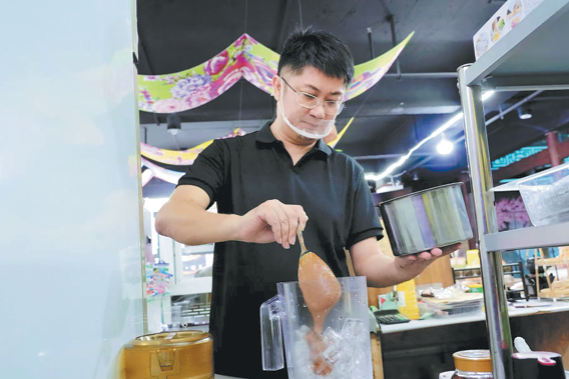Tech awards handed out to top scientists
More breakthroughs being developed by younger generation of inventors


The winners of the 2019 National Science and Technology Awards featured younger scientists and more breakthroughs in science and technology that support green development in China and the world.
The State Preeminent Science and Technology Award, the top scientific honor, was granted to two researchers: one on nuclear submarine design and the other for meteorological studies.
The first prize winner of the State Natural Science Award, the nation's highest accolade for basic research, went to Zhou Qilin and his team at Nankai University for discovering a class of advanced catalyst called "chiral spiro catalysts" that can speed up molecular creation for products ranging from chemical materials to new drugs.
Material sciences, the chemical industry, construction, mechanical and agricultural engineering, pollution monitoring, environmental protection and other fields that support green and sustainable development are among some of the biggest winners this year, according to the National Office for Science and Technology Awards.
The overall age of the award winners this year is also younger at 44.6 years of age, two years lower than the prior year, according to the office data.
More than 60 percent of all winners are below age 45, meaning young scientists are starting to play a major role in spearheading breakthroughs in China's basic research, the office said, adding some of the methods and products emerging from such research even have global appeal.
Li Jinmin, a researcher from the Institute of Semiconductors of the Chinese Academy of Sciences, said his work focused on improving the efficiency and life expectancy of LEDs, one of the most commonly used sources of light in the world.
"The incandescent light bulb lit up the 20th century, and LEDs will light up the 21st century," he said.
LEDs use less energy, last significantly longer, and produce greater brightness compared to compact fluorescent and incandescent bulbs, thus it has played a crucial role in cutting electricity costs for homes and cities across the globe, he added.
Given its significance, the 2014 Nobel Prize in physics went to three Japanese scientists who developed blue LEDs in the early 1990s, which led to the creation of the white-light LED bulbs we use today.
Li said his research focused on making LEDs brighter, longer-lasting, and cheaper to produce.
His work received the first prize in the 2019 State Scientific and Technological Progress Award for transforming China into a global LED producer and bolstering the nation's own LED industry, which was valued at over 730 billion yuan ($105 billion) in 2018, according to Common Sense Advisory, a global market research firm.
Another example is Wang Jing, a researcher from the Chinese Academy of Agricultural Sciences, whose team invented new ways to efficiently detect toxic chemical residues on farm produce.
Her testing methods are currently being used in over 3,000 companies in China whose products have been sold in 21 countries around the globe.
For her contribution in ensuring food safety in China and international trade, she was awarded the second prize of the State Technology Innovation Award.
"If we can efficiently identify the toxic materials in our produce, we can effectively supervise the quality of our product and ensure the health of our consumers," she said.
- Study reveals thirdhand smoke as hidden indoor air pollutants
- Meeting held to mark China National Democratic Construction Association's 80th founding anniversary
- World's largest high-speed-rail tunneling machine passes 10,000 meters beneath Yangtze
- Alliance of Open Life Science expands global reach with new membership invitations
- Winter harvest keeps markets supplied in Linze, Gansu
- Wanfenglin's karst peaks wear ethereal winter veil in Guizhou





































